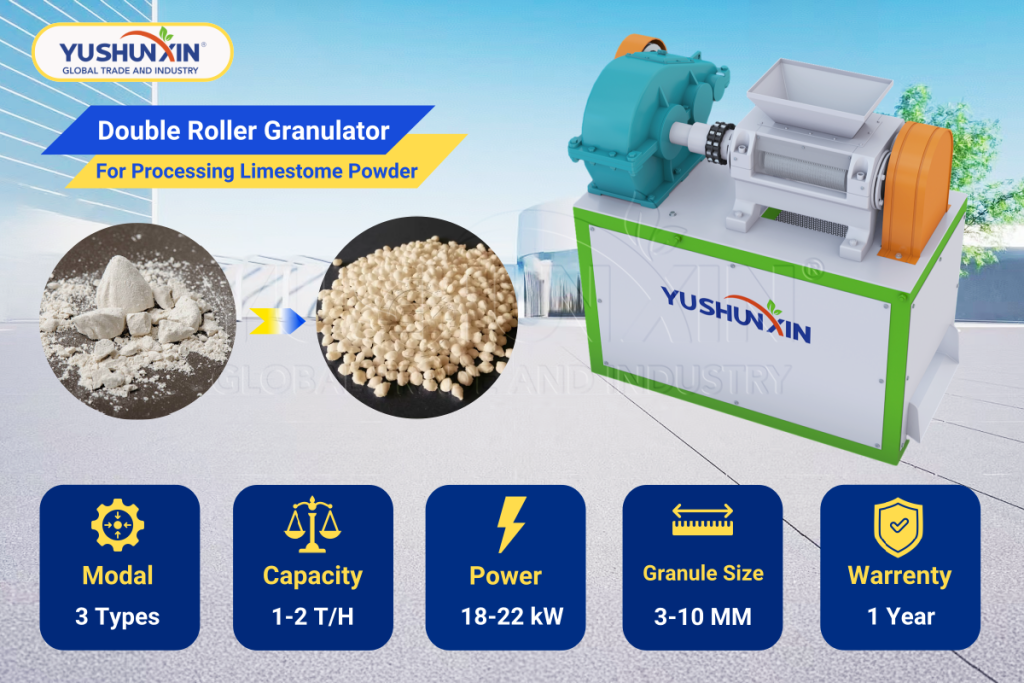The production of lime powder granules requires careful attention to equipment choice, raw material characteristics, and the intended application of the finished fertilizer particles. When seeking efficient lime rock fertilizer production, buyers from various industries must consider performance, compatibility, and cost-effectiveness throughout the granulation process. Understanding the unique requirements of different raw materials and their roles in various sectors guides the correct choice of machinery for optimal lime-based pellet manufacturing.
What Types of Raw Materials Are Suitable for Lime-Based Fertilizer Pellet Production?
Lime powder, limestone, and lime rock all serve as foundational substances for fertilizer pelletization in multiple industries beyond agriculture. In the environmental sector, hydrated lime powder helps neutralize acidic soils and treat industrial wastewater. The steelmaking industry often employs limestone-based particles as flux agents to remove impurities from molten metals. In the construction field, quicklime and associated granules serve in soil stabilization and as additives for cementitious products. Each sector demands specific characteristics from their lime-based fertilizer granules, such as particle size uniformity, hardness, and solubility, influencing the choice of raw materials and the granulating process. Coupling lime powder with nutrients like phosphates or magnesium can further enhance fertilizer value, requiring machinery capable of uniform mixing and precise pellet formation.

How Do Equipment Features Address the Needs of Diverse Granulation Procedures?
The selection of granulation machinery for lime-based fertilizer production depends on the material’s physical properties and the desired qualities of the finished product. When working with fine hydrated lime powder, manufacturers often require equipment that can handle dust control and moisture sensitivity. For hard limestone particles, crushers and compactors must deliver robust mechanical strength to ensure efficient size reduction and compaction. A double roller extrusion granulator plays a crucial role in dry pelletizing, offering advantages such as low energy consumption, minimal binder usage, and the ability to customize pellet size through interchangeable molds. Meanwhile, a rotary screening machine ensures consistent granule size distribution, which is essential for both fertilizer effectiveness and marketability. The process often begins with a loader-type feeder for bulk material transfer, followed by a chain crusher for preliminary size reduction, and a horizontal mixer for ingredient blending. The addition of belt conveyors and automatic packaging scales further streamlines lime fertilizer pellet making from start to finish, providing high throughput and operational efficiency across industrial-scale production lines.
What Process Factors Influence the Choice of Granulation Technology for Lime Fertilizer?
Granulation technology selection for lime-based fertilizer manufacturing must account for raw material moisture, particle fineness, and the required chemical reactivity of the end granules. Dry granulation methods, such as extrusion or double roller pressing, suit powdery lime rock by minimizing moisture introduction and supporting continuous production. This contrasts with wet pelletizing, which can compromise lime stability and increase drying costs. The granulator’s design, including pressing strength and roller configuration, must align with the compressibility of the limestone or lime powder mixture. Furthermore, when targeting applications in the steel or environmental remediation industries, manufacturers may require specialized pellet shapes or coating procedures, adding complexity to the equipment configuration. Each process step—from material feeding with loaders, reduction by chain crushers, blending in horizontal mixers, granulating by double roller extruders, to screening and automated packing—contributes to the overall efficiency and quality of lime-based fertilizer particle production.
Conclusion
Optimal lime powder pellet making relies on a thorough understanding of raw material suitability, sector-specific requirements, and advanced machinery capabilities. By tailoring equipment selection to the chemical and physical properties of lime, limestone, or lime rock, and by leveraging process features like double roller extrusion granulation and automated handling, manufacturers can ensure high-quality fertilizer granules for diverse applications. For those seeking expert guidance in machinery configuration and process optimization, a professional fertilizer equipment manufacturer such as Yushunxin provides integrated solutions designed to elevate lime-based granulation efficiency and product performance. You can visit: https://www.extruder-granulator.com/product/limestone-powder-granulation-machine/